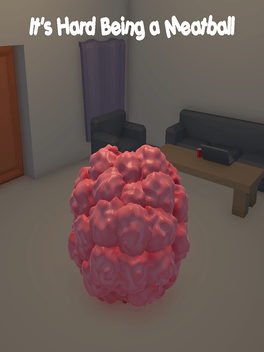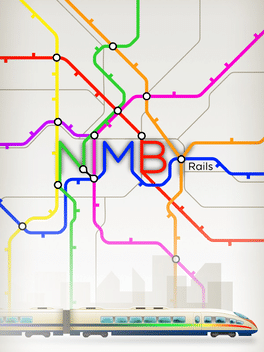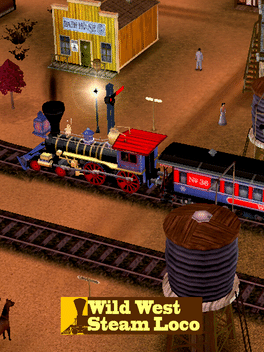Most Popular Dos Games - Page 434
-
Hi no Homo
2017
Hi no Homo
2017
Hi no Homo is a simulator of awkward people saying hi give your friend a handshake!! what could go wrong? made by Angela He in a day *Note: playing this extremely realistic simulation of everyday interaction may cause side effects of smiles, discomfort, and crippling realizations -
Karakai Simuation Game
2018
A spin-off game titled Karakai Simulation Game is included in the initial box release of Volume 1 of the CD / Blu Ray. -
Virtual Viking
2020
Virtual Viking
2020
Virtual Viking is immersive training that will enable you to increase your familiarity with Viking valve systems. Experience various industry standard fire protection systems in operation during a building fire. Further discover these systems through observations and guided interactive learning. -
Group Project Simulator
2020
In a group project with a colorful cast of characters, Yu must try to get that A. Fail at scheduling group meetings, stop group members from procrastinating, and maybe adopt a cat. -
It's Hard Being a Meatball
2015
On days when you're a meatball, the world seems like it has it out for you. -
Nimby Rails
2021
Nimby Rails
2021
Design and run your own railroads for the real world. Fix global transportation dilemmas. Unleash your inner railway engineer and transit policy manager. -
Wild West Steam Loco
Fully functional model railway building game in Wild West style. Create and paint the landscape, place the tracks, steam engines and wagons. Start the trains and create control sequences to direct them to the right tracks. -
Weapons Genius VR
2020
Weapons Genius VR
2020
You act as a weapon genius and create ever new types of weapon with better performances. -
Flight of Nova
2022
Flight of Nova
2022
Flight Of Nova is a flight simulation in which you take control of spacecrafts on the full-scale planet NVA-31. You will fly on different types of machines during transport and research missions in an environment with realistic aerodynamics and orbital physics. -
Chicaro Dentistry
It's a dental simulation game that treats a cow who visits a space shuttle dentist. It's a game where you can use the tools you need to cure tooth decay to heal a child's cavity. -
Drive 'n' Park
2016
Drive 'n' Park
2016
Drive 'n' Park is a fun 3D car driving and parking game for mobiles and tablets. Drive through different mini city environments and enjoy completing challenging levels. -
Almighty: God Idle Clicker
2018
Did you ever imagine, how is it to create your own idle world by ruling the whole universe? Then play the god and become idle world tycoon by evolving your world through the ages, in the most immersive clicker game ever! You start to rule your own idle world after big bang which has created first living forms on your world, but that's just the beginning! Heaven wants more, so discover legendary species to gain more boost, optimize your income, complete the quests, upgrade your statistics, click to gain energy and of course claim rewards! -
Buubuu Mario
1993
Buubuu Mario
1993
Buubuu Mario (Buzzing Mario) is a common Mario arcade-ride hybrid game released only in Japan by Banpresto. Very little is known about it and can only be assumed through video playthroughs. The game is a combination kiddy ride/video game starring Mario and Yoshi. The player sits in front and must steer the car to avoid boulders in the road, while sculpture representations of Mario and Yoshi sit in back. -
Towards the Enduring Light
2020
Short experimental experience responding to the Wuhan Coronavirus outbreak. -
PeakPoise
2020
PeakPoise
2020
PeakPoise is a VR simulator, where the player can practice playing instruments in different scenes. You should have an operator who can trigger different events. -
Galactic Center VR
2020
-
Bokomu no Tatsujin
2002
Bokomu no Tatsujin
2002
Bokomu no Tatsujin is a Board Game video game published by Fujicom released on January 24th, 2002 for the SEGA Dreamcast. A very unusual cartoon look to this little known tongue in cheek life simulator with some off kilter humour to match. Think of a cuddly version of Jet Set Radio in terms of visual look. The game sees the player preparing dishes in a kitchen, jumping up stairs with a plank of wood on the shoulder as logs roll down and giving out tissues to people coming out of the train station. Quite a mull of mini games with a very unique graphical style and its own gags thrown in. -
Rabbids Invasion
2012
Rabbids Invasion
2012
Rabbids Invasion was a simulation social network game released by Ubisoft on April 3, 2012. The game (which was still in beta production throughout its course) was available for free as an Adobe Flash application for anybody who has an account on social networking site Facebook. On the 28th January 2013, the Rabbids Invasion Facebook page announced that the game was be closed on the 13th February 2013; the reason for this is currently unknown, but the name Rabbids Invasion had since been used as the title for an animated TV series which aired in August 2013. -
Put In Bad
2019
Put In Bad
2019
Put In Bad is a simulation game that will allow you to plunge into the difficult life of the president! Objective: to save enough money and leave the presidency. -
Casino De Luxe
1995
Casino De Luxe
1995
Play many Casino games in a realistic looking Casino. Lose all your money in Las Vegas without really losing it.



















